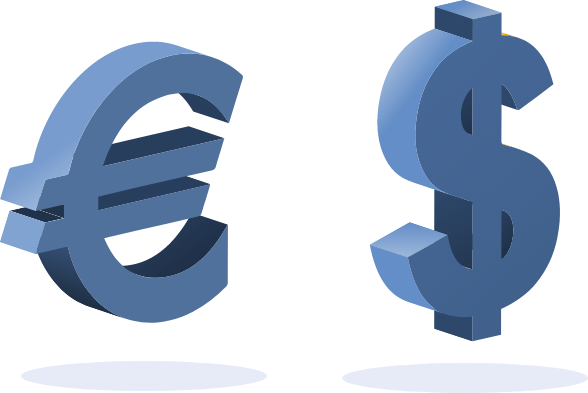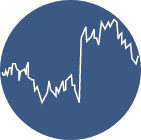The Lirunex team is passionate about providing a comprehensive forex trading experience, whether you’re an experienced investor or completely new to the forex market. If you’re a Beginner, our guide to trading is designed to break down the terminology and answer the most frequent asked questions asked by traders.
Our guide, will assist you to trade quicker and with more confidence in no time.
What is forex?
Forex is all about speculating on the fluctuating currencies between different countries. Two currencies are referred to as ‘currency pairs’ and they’re made up of the base currency and the quote currency. The most traded currency pair of all is the Euro against the US Dollar, which is normally presented as EUR/USD.
What are currency pairs?
Forex is all about speculating on the fluctuating currencies between two countries. These two currencies are referred to as ‘currency pairs’ and they’re made up of the base currency and the quote currency. The most traded currency pair of all is the Euro against the US Dollar, which is normally presented as EUR/USD.
Base Currency
Quote Currency
Bid Price
Ask Price
EUR
USD
1.0916
1.0918
Pip Calculation
Ask Price – Bid Price
1.0918 – 1.0916
= 0.0002 (2pips)
What’s a base currency?
This is the first currency set that appears in the forex pair. It’s the one that’s bought or sold for the quote currency. In the example above, the EUR is the base currency.


How does forex trading work?
How does forex trading work?
To trade forex is to buy and sell currencies – with the aim of making a profit. Forex trading will always involve two currencies at a time, the base currency and the quote currency. The difference in price is where you’ll make your profit or loss.
Is forex trading risky?
Is forex trading risky?
Any kind of trading has its risks and that’s crucial to always keep in mind, but it can also create profits which is why so many people do it. Again, It is advisable to start trading on a demo account if you’re new to forex trading. Once you’re ready for a live account, you should always fully consider the risks involved.
What is a position?
A position is a trade which is currently in progress. In trading, you can get long positions and short positions:
Long position: this is when the trader has bought a currency with the expectation that it will increase. Once the currency is sold back, the long position is considered closed.
Short position: this is when the trader has sold a currency with the expectation that it will decrease. Once the currency is bought back, the short position is considered closed.


What currency pairs are most popular in forex trading?
What currency pairs are most popular in forex trading?
While you can trade almost any currency pair in theory, there are certain pairs that are consistently the most traded. These are called Major pairs (it’s in the name) – they make up 80% of the entire trading volume in the forex market. Major currency pair is consider the pair which is composed of any two of the following currencies: U.S. Dollar, Euro, Japanese Yen, Great Britain Pound, Canadian Dollar and Swiss Franc.
These major pairs are associated with stable economies and therefore offer low volatility and high liquidity. Major currency pair is consider the pair which is composed of any two of the following currencies: U.S. Dollar, Euro, Japanese Yen, Great Britain Pound, Canadian Dollar, Swiss Franc. Example of major pairs include the aforementioned EUR/USD, the USD/JPY (the US Dollar and the Japanese Yen), GBP/USD (British Pound and the US Dollar) and the USD/CHF (the US Dollar and the Swiss Franc). Another characteristics of major currency pairs is that there’s a smaller risk of them getting manipulated and the spreads are usually pretty small.
What are cross currency pairs?
Cross currency pairs are also known as Crosses, and are pairs that do not include the US Dollar. Popular pairs in the Crosses family include the EUR/GBP, the GBP/JPY and the EUR/JPY.
What are exotic pairs?
Exotic pairs – or just Exotics for short – are those currencies that come from smaller economies and the so-called emerging markets. They’re usually paired up with a major currency. Because these offer the least amount of liquidity and the highest volatility of the three brackets, they are regarded as the riskiest to trade.
Examples include USD/MXN, GBP/NOK and CHF/NOK.
What are the abbreviations for the most common currencies?
What are the abbreviations for the most common currencies?
For ease, forex relies on abbreviations for the various currencies. Here’s a sample of the most common currencies:
For ease, forex relies on abbreviations for the various currencies. Here’s a sample of the most common currencies:
EUR: Euro
USD: US Dollar
GBP: British Pound
CHF: Swiss Franc
AUD: Australian Dollar
CAD: Canadian Dollar
NZD: New Zealand Dollar
MXN: Mexican Peso
NOK: Norwegian Krone
DKK: Danish Krone
CNY: Chinese Yuan Renminbi
EUR: Euro
USD: US Dollar
GBP: British Pound
CHF: Swiss Franc
AUD: Australian Dollar
CAD: Canadian Dollar
NZD: New Zealand Dollar
MXN: Mexican Peso
NOK: Norwegian Krone
DKK: Danish Krone
CNY: Chinese Yuan Renminbi
What are the nicknames for all the pairs?
What are the nicknames for all the pairs?
In forex trading, the various combinations of currency pairs have developed their own nicknames. Some are self-explanatory, some have historical relevance. Check them out below:
MAJORS:
EUR/USD : “Fiber”
GBP/USD : “Cable”
AUD/USD : “Aussie”
NZD/USD : “Kiwi”
USD/JPY : “Ninja”
USD/CHF : “Swissie”
USD/CAD : “Loonie”
MINORS:
EUR/GBP : “Chunnel”
GBP/JPY : “Guppy”
CAD/CHF : “Loonie Swissy”
EUR/JPY : “Yuppy”
NZD/JPY : “Kiwi Yen”
MAJORS:
EUR/USD : “Fiber”
GBP/USD : “Cable”
AUD/USD : “Aussie”
NZD/USD : “Kiwi”
USD/JPY : “Ninja”
USD/CHF : “Swissie”
USD/CAD : “Loonie”
MINORS:
EUR/GBP : “Chunnel”
GBP/JPY : “Guppy”
CAD/CHF : “Loonie Swissy”
EUR/JPY : “Yuppy”
NZD/JPY : “Kiwi Yen”
Forex Charts
A lot of forex traders will use charts to demonstrate movements within the markets, which usually involves one of the three types of charts below: the Japanese Candlestick, the Bar and the Line.
The Japanese Candlestick Chart

or Candlestick Chart for short, conveys a lot of information, making it one of the most popular charts for forex traders. With the simplest components, traders can see the high, low, opening and closing prices on a candlestick chart.
These charts have three points – the open, close and the wicks. The wicks represent the high to low range, and the wide section will explain whether the closing price was higher or lower than the opening price. If it closed higher, the candlestick will be filled. If it closed lower, the candlestick will be empty.
The Bar Chart

Shows the opening, closing, high and low of the currency prices. So the top of the bar shows the highest price paid, while the bottom shows the lowest price traded during that particular length of time.
The bar itself is indicative of the currency pair’s trading range, while the horizontal lines show, on the left, the opening prices and, on the right, the closing prices.
The Line Chart

is the simplest of all three graphs, which is why forex beginners love them and advanced traders tend to use Candlesticks or Bars. The line chart simply shows the price movement of a currency pair – by having a line drawn from one closing price to the next – during a specified length of time.
How do I start forex trading?
That’s where we come in. Newcomers to forex trading should always use a broker who is a) regulated, transparent and b) has the necessary track record to help their investors. With trading, you will need to deposit funds to make the first trade, in what is called a margin account. Needless to say, you can make as many mistakes you want on a demo account first, without risking any of your actual money, until you gain more confidence.
Sign up for a demo account today, and take your first steps into the exciting and profitable world of forex trading.
